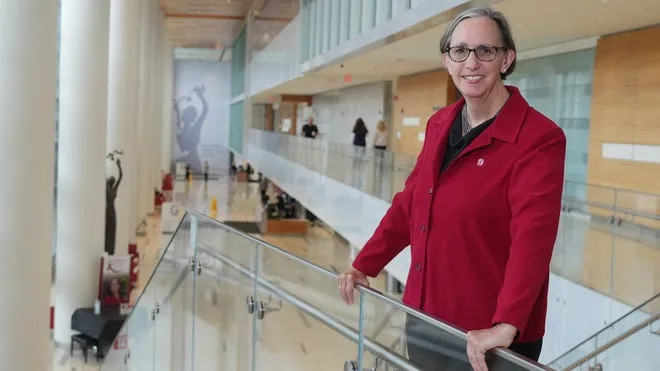A New Era in Cancer Care
The field of cancer care continues to evolve at a rapid pace, leading to unparalleled advancements in treatment and patient outcomes. As institutions strive to provide the best oncology services, leadership plays a pivotal role in steering these efforts. This is especially true at the Ohio State James Cancer Hospital, where Dr. W. Kimryn Rathmell has recently taken the helm as CEO. Drawing from an impressive legacy of innovation and a heartfelt commitment to accessibility, Dr. Rathmell is set to propel the hospital into a new era of cancer care.
Meet Dr. W. Kimryn Rathmell
Dr. W. Kimryn Rathmell is no stranger to the world of cancer research and treatment. With years of dedication in oncology and a focus on personalized medicine, her extensive background encompasses significant advancements that have transformed the way cancer is understood and treated. Dr. Rathmell holds a medical degree from the University of Massachusetts and completed her residency at Harvard and the Dana-Farber Cancer Institute, further polishing her credentials in the field.
As a recognized leader in cancer research, she has contributed to notable breakthroughs in the understanding of renal cell carcinoma, the most common type of kidney cancer. Her innovative approaches have not only advanced research but have also positively impacted clinical practices, ensuring that patients receive cutting-edge therapies tailored to their unique needs.
The Legacy of Cancer Innovation
The Ohio State James Cancer Hospital has been at the forefront of cancer care for years, offering pioneering research and comprehensive health services. The hospital is renowned for its patient-centered approach, drawing on a deep well of resources that combine treatment, research, and education. As part of the larger Ohio State University Wexner Medical Center, it benefits from a leading academic research institution, making it a beacon for scientific advancement in cancer studies.
Under Dr. Rathmell’s leadership, the institution aims to further enhance its legacy of innovation, building on the foundation laid by former leaders. Her vision includes expanding existing research initiatives, implementing novel therapeutic approaches, and ensuring that even the most advanced treatments are accessible to all patients, regardless of their backgrounds.
Commitment to Access
One of the core principles that Dr. Rathmell emphasizes is the importance of access to high-quality cancer care. She understands that cutting-edge treatments and innovative clinical trials must be made available to diverse populations. The disparities in cancer treatment access have starkly highlighted the need for cancer care systems to evolve to serve all individuals equally.
To address this issue, Dr. Rathmell plans to establish outreach programs designed to educate underserved communities about their cancer risks, prevention strategies, and treatment options. By building partnerships with community organizations and advocating for policies that prioritize equitable access to care, she aims to eliminate barriers that historically hinder many patients from receiving the care they deserve.
The Santa Fe Cancer Center: Expanding Treatment Options
While developments at the Ohio State James Cancer Hospital are making headlines, other institutions across the nation are also working to enhance cancer care. Notably, the Santa Fe Cancer Center has recently announced an expansion of its treatment options designed specifically for northern New Mexico residents. This initiative caters to the unique needs of the community and emphasizes the importance of localized, culturally sensitive care.
The Santa Fe Cancer Center serves as a model for how healthcare institutions can adapt treatment strategies to better meet the evolving needs of the populations they serve. By introducing new therapies, clinical trials, and comprehensive treatment plans, the center is not only expanding access but also empowering patients through informed choices.
The Importance of Localized Care
Localized care is critical in a diverse country like the United States, where factors such as geography, socio-economic status, and cultural beliefs can significantly affect health outcomes. Cancer care is no exception, and adapting treatment options to local demographics is essential. The Santa Fe Cancer Center’s commitment to expanding its services highlights this need.
The center’s expansion includes providing access to new technologies and therapies that may not have been previously available in the area. For instance, they have introduced advanced radiation therapies and targeted drug treatments which can be more effective for specific cancer types. Such treatments represent the latest advancements in oncology, showcasing the transformative power of individualized therapy and igniting hope for individuals facing cancer diagnoses.
Innovation and Collaboration
The journey toward improving cancer care often relies on collaboration between institutions, government agencies, private sectors, and community advocates. Dr. Rathmell’s vision for the Ohio State James Cancer Hospital places significant emphasis on collaboration, particularly in research initiatives that span multiple institutions.
She aims to foster partnerships with other leading cancer institutions to facilitate clinical trials that allow patients access to cutting-edge therapies sooner. This involves navigating bureaucratic hurdles to streamline the trial process and ensure that promising research can quickly evolve into tangible patient care solutions.
The Future of Cancer Care
As new leadership takes the reins at major cancer hospitals such as the Ohio State James Cancer Hospital, a renewed sense of vigor and optimism fills the field. The journey is not without its challenges, but the commitment to patient-centered care, accessibility, innovation, and collaborations holds great promise for the future.
Dr. Rathmell’s leadership and the efforts within the Santa Fe Cancer Center represent a larger trend in oncology — one that calls for adaptability and responsiveness to the needs of communities. As these institutions navigate the evolving landscape of cancer treatment, the guiding principle remains clear: ensuring that all patients receive the care they need, when they need it.
Conclusion
Cancer care is at a pivotal moment, defined by a mix of innovation, accessibility, and compassion for patients. With leaders like Dr. Kimryn Rathmell steering major institutions like the Ohio State James Cancer Hospital and dedicated centers like Santa Fe expanding treatment access, the future of cancer care looks promising. The focus on personalized medicine, community outreach, and collaborative research signifies a hopeful trajectory that prioritizes patient well-being above all else. As these leaders drive forward, they are not only paving the way for imminent improvements in treatment but are also instilling a sense of hope for cancer patients and their families nationwide.






